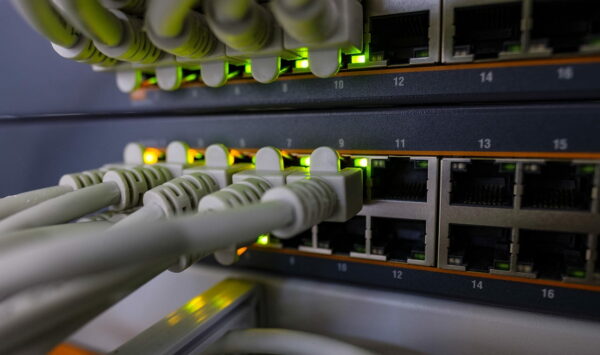✅ Last checked on
If you’re reading this, chances are you’ve heard the term “PC networks” thrown around and thought, “What exactly is that?” Well, you’re in the right place! Whether you’re setting up your first home network or just want to understand what’s going on behind the scenes, this guide is here to help you get a grasp on the basics of PC networks. Don’t worry—we’ll keep it simple and easy to follow. Let’s dive in!
What is a PC Network?

Let’s start with the basics. A PC network is essentially a group of computers that are connected to each other to share resources like files, printers, or even the internet. Imagine it as a club where all the members (computers) can talk to each other and share things they have.
There are different types of networks, but the most common one you’ll encounter is a Local Area Network (LAN). This is the network in your home or office where all your devices are connected, usually through a router. On the other hand, a Wide Area Network (WAN) covers a larger area, like connecting multiple offices across different cities.
Why Do We Need PC Networks?
So why bother with a network at all? Good question! PC networks make our digital lives so much easier. Here are a few reasons why:
- Sharing is caring: With a network, you can share files, printers, and even your internet connection among different computers. No more running around with USB drives!
- Collaboration: If you’re working on a project with someone else, a network allows you to work together on the same files, without duplicating efforts.
- Centralized Management: In offices or even at home, a network lets you manage devices and data from a central point, like a server. This makes things more organized and secure.
Key Components of a PC Network
Alright, now that we know why networks are awesome, let’s break down the key components that make up a PC network.
- Router: Think of the router as the brain of your network. It directs traffic between the internet and your devices. If you’re using Wi-Fi, the router is also responsible for sending out that wireless signal.
- Switch: A switch connects multiple devices on the same network. If you have more devices than your router has ports, a switch expands your network without slowing it down.
- Network Interface Card (NIC): Every device on a network needs a NIC. It’s a piece of hardware that allows your computer to connect to a network, either wired (Ethernet) or wireless.
- Cables/Wi-Fi: Cables (like Ethernet cables) physically connect devices in a wired network. Wi-Fi, on the other hand, allows devices to connect without cables—ideal for laptops, smartphones, and tablets.
Setting Up Your Own PC Network
Setting up a PC network might sound intimidating, but it’s easier than you think! Here’s a simple step-by-step guide to get you started:
- Get the Right Equipment: You’ll need a router and, if necessary, a switch. Make sure your devices have NICs (most do, especially newer ones).
- Connect Your Router to the Internet: Plug your router into your modem (the device provided by your ISP). This connects your network to the internet.
- Connect Your Devices: For wired connections, use Ethernet cables to connect your devices to the router or switch. For wireless connections, connect your devices to the Wi-Fi network created by your router.
- Configure Your Network: Access your router’s settings through a web browser (usually by typing in an IP address like 192.168.1.1). Here, you can name your network, set a password, and adjust other settings.
- Test Your Connection: Make sure all your devices can connect to the network and the internet. If something’s not working, double-check your connections and settings.
Securing Your PC Network
Security is super important! You don’t want strangers piggybacking on your network or, worse, accessing your personal data. Here’s how to keep things secure:
- Change the Default Password: Your router comes with a default password that’s easy for hackers to guess. Change it to something strong and unique.
- Enable WPA3: This is the latest Wi-Fi security protocol. If your router supports it, use it. If not, WPA2 is still a good option.
- Disable WPS: Wi-Fi Protected Setup (WPS) is a convenient but vulnerable feature. Turn it off to prevent unauthorized access.
- Keep Your Firmware Updated: Router manufacturers release updates to patch security flaws. Make sure your router is running the latest firmware.
- Use a Guest Network: If you have visitors who need to use your Wi-Fi, set up a guest network. This keeps your main network and devices secure.
Troubleshooting Common Network Issues
Even the best networks can run into issues. But don’t panic! Here are some common problems and how to fix them:
- No Internet Connection: Check if your router is properly connected to the modem and if the internet service is active. Restarting the router can often resolve the issue.
- Slow Internet Speed: Too many devices using the network can slow things down. Disconnect devices you’re not using. Also, try moving your router to a central location for better Wi-Fi coverage.
- Devices Not Connecting: Double-check your Wi-Fi password. If that’s not the issue, try restarting the device or resetting the network settings.
- Interference: Other electronic devices can interfere with your Wi-Fi signal. Try changing the Wi-Fi channel in your router’s settings.
Wrapping It Up
And there you have it! Now you’ve got a solid understanding of PC networks. Whether you’re setting one up at home or just curious about how things work, you’re better equipped to dive into the world of networking.
Remember, a strong, secure network is the backbone of your digital life. With the right setup and a little know-how, you’ll be running things smoothly in no time. So go ahead, start tinkering, and enjoy the seamless connectivity that a well-built PC network brings to your world!
Happy networking!